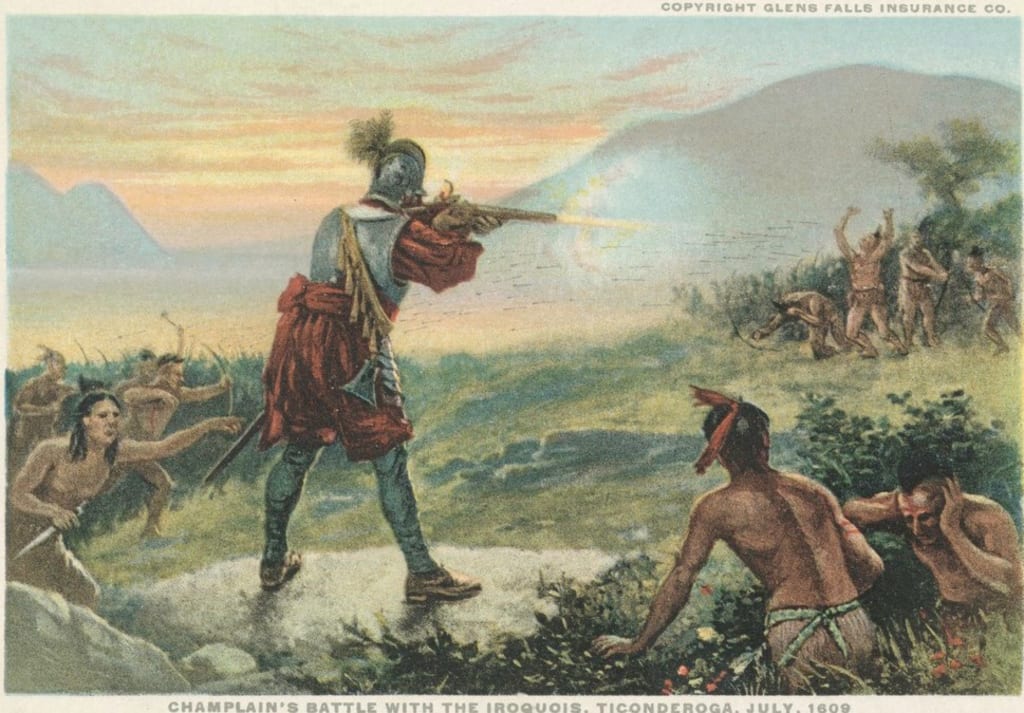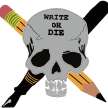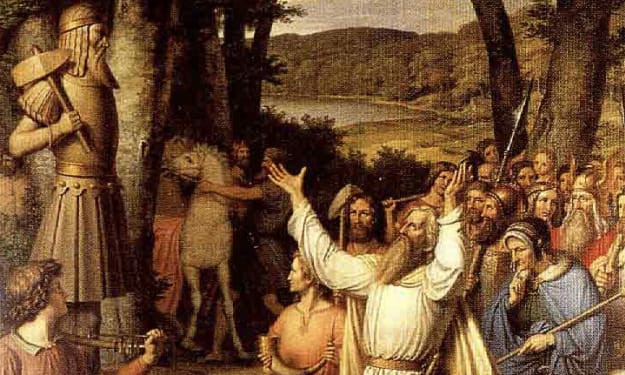The Great Leap Forward: (Part 1)
How the Introduction of French and Dutch Metal Products Transformed the American Northeast

This is the first part in an experimental history series. Rather than publishing my history paper as one large piece, I am breaking it up into a few smaller parts. I would love some feed back on my social media of which is better. Thank you, and enjoy.
____________________________________________________
The introduction of French and Dutch metallurgical goods into the American northeast would have a long and profound effect on the native populations who first encountered the them. The most influential of these would be metal cooking utensils and firearms. The desire for one, leading to greater competition for the other. The early phases of firearms amongst the tribes of the northeast would have a similar effect to their emergence in Europe. The main similarities being that tribes with a tradition of a strong martial culture, better communication, and organization would come to dominate their area of influence. This domination led to the integration of the less dominate and disadvantaged tribes being absorbed into a larger culture. In this, the French and Dutch were not merely exporting their metallic goods, but also the resulting culture that comes with firearms, and the purchase of cooking wares that were not made locally, leading to a reliance on imported goods.
The French came to the northern frontier in the early sixteenth century. The French had made their first attempt at colonization in Florida but were pushed out by the advancing Spanish. This led them further north, past the English claims along the Atlantic seaboard, into what would become the Saint Lawrence river valley. Here, they would find their wealth in trading for furs amongst the native tribes. The Huron became their main trading partners, which led to a rivalry with their longtime enemies to the east. The Iroquois and Huron had been enemies for time immemorial by time the French began probing the area. The Huron Confederacy and Iroquois League were both composite nations made up of other tribes. Each nation had varying methods of dealing with internal and external conflict. In this, they would have a rudimentary understanding of the European politics involved in colonization.
Two of the most prominent French explorers were Pierre-Esprit Radisson and Samuel de Champlain, the latter of which would have a lake in the area named after him. De Champlain’s significance in the era was that of the first European to accurately map the northeast and to found the colony of Quebec. Radisson’s contribution to the early French colonial era were his diaries of exploration. The founding of the Hudson Bay company led Radisson ally with the Huron, which led to his eventual capture by the Mohawk. His writing of his time in captivity amongst Mohawk gives significant insight into how the Mourning War tradition of adopting others into a tribe, in order to replace a lost member, looked from the perspective of someone living it.
In the early colonial period, it was the policy of French and English colonists of the Atlantic seaboard to not sell or trade firearms to the natives. This was done in order to maintain European superiority of force. However, it would become untenable for this to continue. The first Europeans to explicitly introduce firearms to the natives were the French. This was done to maintain good relations with their Huron allies. As many Frenchmen intermarried with the Huron and other tribes, it would have been deeply offensive for the French to not share or trade their goods with their tribal kin. Around the same time, firearms were making their way into the tribes of the Chesapeake. This led to an incident that acted as a warning to the precariousness of Native Americans with firearms. In the 1620s a group of English colonists attempted to raid an Algonquin village. The English raiders were repelled by a native force wielding muskets and arrows with metal heads. (1,2)
Continue to Part 2:
Thank you for reading my work. If you enjoyed this story, there’s more below. Please hit the like and subscribe button, you can follow me on Twitter @AtomicHistorian, and if you want to help me create more content, please consider leaving a tip or a pledged subscriber.
More from this author:
Citations:
1. Daniel K. Richter, Facing East from Indian Country: A Native History of Early America (Cambridge: Massachusetts. 2001), 49.
2. Ibid., 52.
About the Creator
Enjoyed the story? Support the Creator.
Subscribe for free to receive all their stories in your feed. You could also pledge your support or give them a one-off tip, letting them know you appreciate their work.






Comments (1)
Interesting so far.